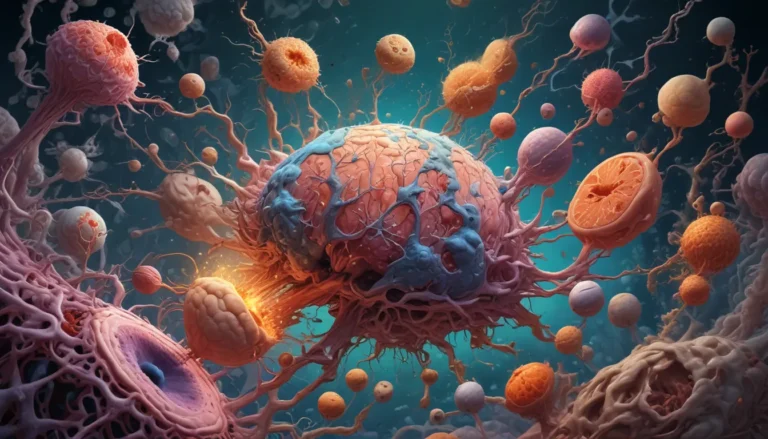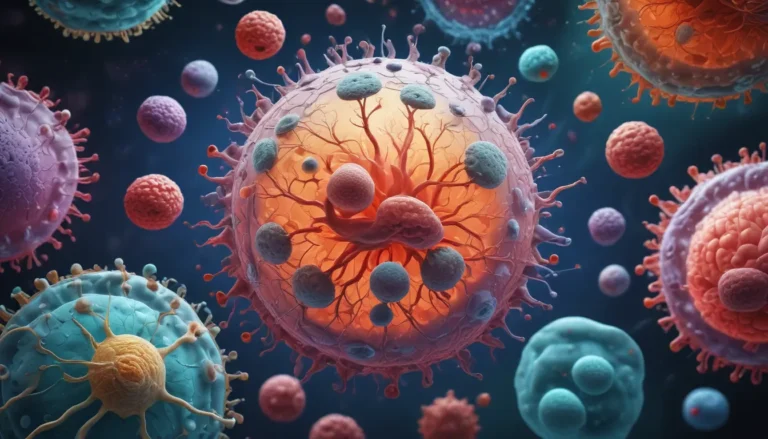A Note About Images: The images used in our articles are for illustration purposes only and may not exactly match the content. They are meant to engage readers, but the text should be relied upon for accurate information.
The intricate web of cell-to-cell communication known as the Wnt signaling pathway is a fundamental player in the orchestration of life. From the development of organs to the regulation of immune responses and even the control of hair growth, this pathway is like a master conductor guiding the symphony of biological processes. In this article, we will embark on a journey through the captivating realm of the Wnt signaling pathway, unveiling 20 astounding facts that highlight its significance and impact on life as we know it.
The Grand Maestro of Embryonic Development
At the core of embryonic development lies the Wnt signaling pathway, a crucial regulator of processes such as cell proliferation, differentiation, and tissue patterning. This intricate pathway ensures the proper formation of organs and body structures, laying the foundation for life to flourish.
The Name Behind the Mystery
The enigmatic name “Wnt” finds its origins in the combination of the Drosophila gene “wingless” and the oncogene “int-1” found in mice. This naming reflects the pathway’s essential roles in both developmental processes and cancer progression, shedding light on its diverse functions.
A Symphony Across Species
One of the most remarkable aspects of the Wnt signaling pathway is its high degree of conservation across species. From fruit flies and worms to humans, this pathway’s components and functions remain strikingly similar, underscoring its fundamental importance in biological processes.
The Diverse Ensemble of Wnt Proteins
The Wnt family boasts a repertoire of 19 distinct proteins, each binding to specific receptors to kickstart the signaling cascade. These proteins exhibit unique functions and spatial-temporal expression patterns, contributing to the intricacy of the Wnt signaling pathway.
A Precarious Balancing Act: Wnt and Cancer
The dysregulation of the Wnt signaling pathway can have dire consequences, including the onset and progression of various types of cancer. From colorectal and breast cancer to liver cancer, understanding this pathway’s nuances is crucial for developing targeted therapies against cancer.
The Maestro of Stem Cells
In the realm of stem cells, the Wnt pathway takes center stage, orchestrating the maintenance of pluripotency and self-renewal capacity. By striking a delicate balance between proliferation and differentiation, this pathway ensures the continuous supply of undifferentiated cells for tissue regeneration.
The Architect of Bone Formation
When it comes to bone development and remodeling, the Wnt signaling pathway reigns supreme. By triggering the differentiation of mesenchymal stem cells into osteoblasts, the cells responsible for bone formation, this pathway lays the foundation for skeletal health.
The Gatekeeper of Hair Growth
Wnt signaling extends its reach to the realm of hair follicles, influencing the growth and maintenance of hair. Any disruption in this pathway can lead to hair disorders such as alopecia, underscoring its role in maintaining healthy hair cycles.
The Maestro of Regeneration
In the realm of tissue regeneration and wound healing, the Wnt pathway emerges as a key player. By promoting cell proliferation and migration, this pathway aids in the repair and regeneration of damaged tissues, paving the way for healing to take place.
The Conductor of Neuronal Symphony
During brain development, the Wnt signaling pathway takes on the role of a conductor, guiding the proliferation and differentiation of neuronal progenitor cells. It also oversees the formation and remodeling of synapses, crucial junctions between nerve cells.
The Guardian of Cardiac Harmony
Heart development is a delicate dance orchestrated by the Wnt pathway, ensuring the proper formation of cardiac tissue and function. Any dysregulation in Wnt signaling can lead to congenital heart defects, underscoring its pivotal role in cardiovascular health.
The Sentinel of Immune Balance
The Wnt pathway emerges as a regulator of immune responses, modulating the activation of immune cells and the regulation of inflammatory processes. This highlights its essential role in maintaining immune homeostasis and safeguarding the body against threats.
The Checks and Balances of Wnt Signaling
To maintain precise control over the Wnt signaling pathway, secreted inhibitors such as Wnt inhibitory factor 1 (WIF-1) and Dickkopf-1 (DKK-1) come into play. These inhibitors bind to Wnt proteins or their receptors, fine-tuning their activity and ensuring a delicate balance.
The Harmony of Signaling Networks
The Wnt pathway engages in intricate cross-talk with other signaling pathways, including Notch, Hedgehog, and TGF-beta, forming a complex network of interactions. This integration allows for the precise regulation of developmental processes and cellular functions, ensuring harmonious orchestration.
The Architect of Cell Organization
Through its influence on cell adhesion and cytoskeletal organization, the Wnt pathway shapes cell polarity and tissue organization. By ensuring the proper alignment and arrangement of cells within tissues and organs, this pathway plays a vital role in maintaining structural integrity.
The Custodian of Intestinal Stem Cells
In the intricate landscape of the intestine, Wnt signaling stands as the guardian of stem cells in the crypts, responsible for continuous epithelial cell renewal. Disruptions in this pathway can upset intestinal homeostasis, underscoring its crucial role in gut health.
The Maestro of Kidney Development
Kidney development unfolds under the watchful eye of the Wnt pathway, regulating processes such as nephron formation and branching morphogenesis. Furthermore, this pathway contributes to kidney regeneration post-injury, ensuring renal health.
The Architect of Lung Vitality
In the arena of lung development and repair, Wnt signaling shapes the landscape, influencing branching morphogenesis and cell fate determination. Additionally, it plays a key role in the healing and regeneration of lung tissue after injury, safeguarding respiratory health.
The Conductor of Metabolic Harmony
Wnt signaling extends its influence to the realm of adipogenesis, controlling the differentiation of adipocytes from precursor cells. Any dysregulation in this pathway can contribute to obesity and metabolic disorders, underscoring its role in maintaining metabolic balance.
The Guardian of Reproductive Symphony
From ovarian development to follicle maturation and spermatogenesis, Wnt signaling plays a pivotal role in various reproductive processes. By ensuring fertility and reproductive function, this pathway stands as a guardian of reproductive health.
In Conclusion: A Symphony of Discoveries
The journey through the Wnt signaling pathway unveils a tapestry woven with numerous implications for development, disease, and regeneration. From embryogenesis to tissue maintenance, cell fate determination, and beyond, this pathway orchestrates a wide array of biological processes. By deciphering the intricacies of Wnt signaling, we pave the way for innovative medical treatments, offering hope for diseases like cancer, bone disorders, and neurodegenerative conditions. As researchers continue to unveil the mysteries of this pathway, new horizons and possibilities beckon, promising transformative advancements in human health.
FAQs: Unveiling the Pathway’s Mysteries
- What is the Wnt signaling pathway?
-
The Wnt signaling pathway is a highly conserved cellular communication pathway that regulates processes such as cell proliferation, differentiation, and apoptosis.
-
How does the Wnt pathway influence development?
-
The Wnt pathway plays a critical role in embryonic development by controlling cell fate determination and tissue patterning.
-
What happens when the Wnt pathway malfunctions?
-
Dysregulation of the Wnt pathway has been associated with various diseases, including cancer, neurodegenerative disorders, and developmental abnormalities.
-
How is the Wnt pathway linked to cancer?
-
In many cancers, the Wnt pathway is hyperactivated, leading to uncontrolled cell growth and tumor formation.
-
Are there any drugs targeting the Wnt pathway?
- Researchers are actively developing drugs that target different components of the Wnt pathway, aiming to develop more effective treatments for diseases.
Nurturing a Garden of Knowledge
At the heart of our commitment lies the delivery of trustworthy and engaging content that nourishes your thirst for knowledge. Each fact shared on our platform is a testament to the collective wisdom of contributors like you, enriching our understanding of the world. With a dedicated team of editors ensuring the highest standards of accuracy and credibility, we invite you to embark on a journey of discovery with us. Trust in our pledge to deliver quality and authenticity as we unravel the wonders of science and pave the way for a brighter future.






